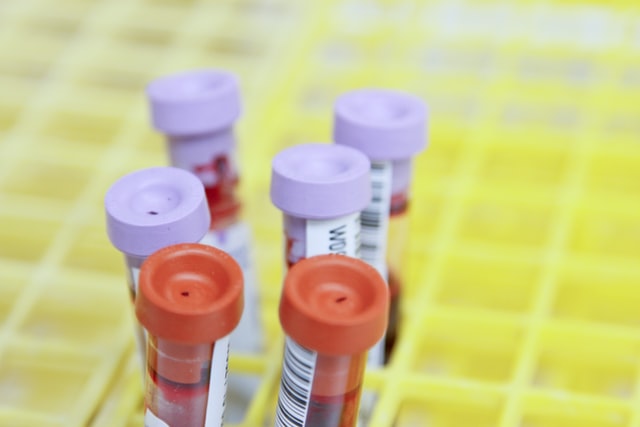New Jersey Keeps Newborn DNA for 23 Years. Parents Are Suing
By Emily Mullin,
Wired
| 11. 08. 2023
image "Blood Samples" by Daniel Sone from the website of the National Cancer Institute
When Hannah Lovaglio’s children were born, she didn’t think twice about the newborn health screening they received in the hospital. The routine test uses a few drops of blood from a heel prick to test for dozens of potentially fatal or disabling genetic diseases.
“I assumed that this was for my child’s best interest and for the best interest of public health,” says Lovaglio, a pastor in New Jersey. What she didn’t know was that after testing was completed, the leftover blood would be stored by the state for 23 years and could be used for purposes beyond medical testing. In a court case that became public last year, New Jersey police allegedly used a baby’s blood sample to investigate its father for a crime.
Lovaglio has joined a federal class action against the New Jersey Department of Health and its Division of Family Health Services, which oversees the state’s newborn testing program. She and the other plaintiffs are suing the state over its storage practices...
Related Articles
By Josie Ensor, The Times | 12.09.2025
A fertility start-up that promises to screen embryos to give would-be parents their “best baby” has come under fire for a “misuse of science”.
Nucleus Genomics describes its mission as “IVF for genetic optimisation”, offering advanced embryo testing that allows...
By Hannah Devlin, The Guardian | 12.06.2025
Couples undergoing IVF in the UK are exploiting an apparent legal loophole to rank their embryos based on genetic predictions of IQ, height and health, the Guardian has learned.
The controversial screening technique, which scores embryos based on their DNA...
By Frankie Fattorini, Pharmaceutical Technology | 12.02.2025
Próspera, a charter city on Roatán island in Honduras, hosts two biotechs working to combat ageing through gene therapy, as the organisation behind the city advertises its “flexible” regulatory jurisdiction to attract more developers.
In 2021, Minicircle set up a...
By Vardit Ravitsky, The Hastings Center | 12.04.2025
Embryo testing is advancing fast—but how far is too far? How and where do we draw the line between preventing disease and selecting for “desirable” traits? What are the ethical implications for parents, children, clinicians, and society at large? These...




